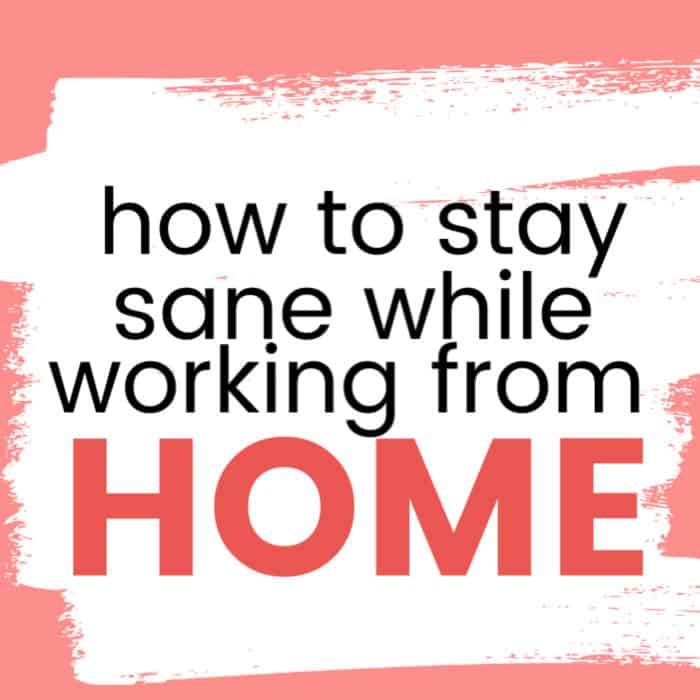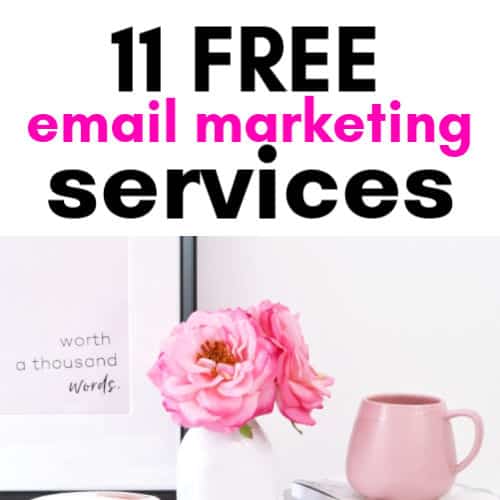Starting an Amazon FBA Store on a Tight Budget (In 5 Easy Steps!)
If you want to start your own online business but don’t know where to begin, Amazon marketplace is a great place to start! In this post, we will give you tips for starting an Amazon FBA store on a tight budget.
That’s the good news – you don’t need to have much money to invest in this great business model.
In fact, you can even make a full-time income with a very small start-up budget if you know how to pick the right product category and the best-selling products that are in high demand.
This step-by-step guide will show you how to become the king or queen of retail arbitrage in no time!
Are you ready? Let’s dig into the wonderful world of the Amazon business.
Additionally, you can consider drop shipping as a way to reduce upfront costs.
However, keep in mind that this model may result in lower profit margins due to higher product costs.
Another option is to purchase small quantities of your product to test the market before committing to a larger inventory.
To succeed in the competitive world of Amazon FBA, it is important to have a solid plan and be prepared to put in the work.
By following these tips, you can start your own Amazon FBA store on a tight budget and begin your journey toward financial freedom.
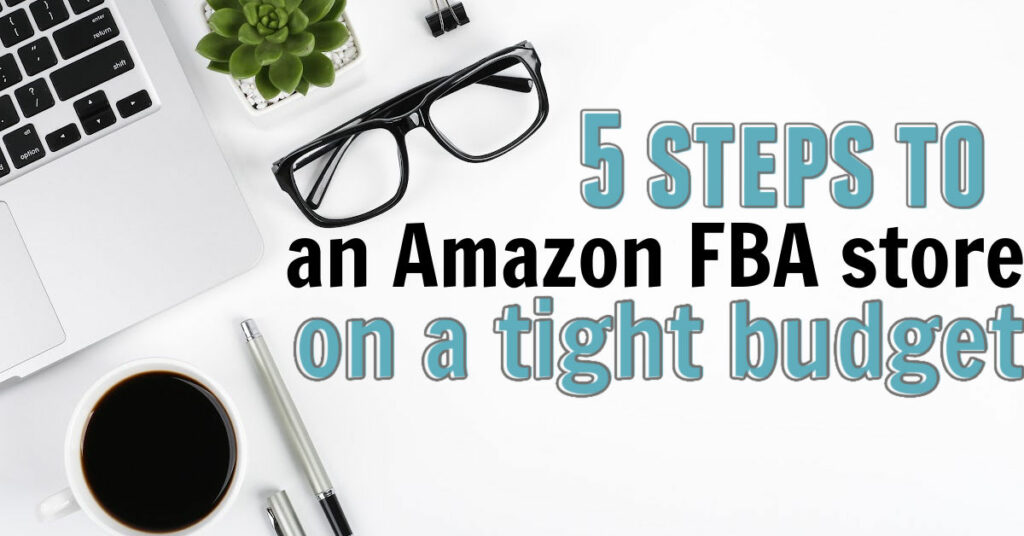
This post may contain affiliate links. Please read my disclosure for more information
What is Amazon FBA?
Let’s start at the beginning – Amazon FBA stands for “Fulfillment by Amazon.”
This program allows you to store your products in Amazon’s warehouses while Amazon takes care of the packing, shipping, and customer service for your orders.
When you sell a product through Amazon FBA, Amazon handles all of the logistics for you, making it a convenient option for small business owners who don’t have the resources to handle these tasks on their own.
This business model means that you can run your own business without worrying about spending a lot of money on overheads like storage facilities or shipping costs.
Why Sell With Amazon FBA?
There are several benefits to using Amazon FBA for your small business.
In addition to the ease of working on the Amazon platform, and the fact that you can get started with a small budget, there are some other great advantages too:
- Prime Eligibility: When you use Amazon FBA, your products are eligible for Prime shipping, which can help you attract more customers and increase sales.
- Lower Shipping Costs: Because Amazon has negotiated lower shipping rates with carriers, you can often save money on shipping costs by using Amazon FBA.
- Customer Service: Amazon handles all of the customer service for your orders, which can save you time and resources.
- Scalability: With Amazon FBA, you can easily scale your business as it grows. Amazon has the infrastructure in place to handle large volumes of orders, so you don’t have to worry about outgrowing your current capabilities.
- Brand Name Recognition: Starting an online store on the Amazon platform means that you have customers coming to you instead of you having to hunt them down. Plus people know and feel confident in the Amazon brand meaning it is easier to make sales.
Overall, Amazon FBA is a great option for small business owners who want to sell their products online without having to worry about the logistics of shipping and customer service.
By using Amazon FBA, you can focus on growing your business and let Amazon handle the rest.
Starting An Amazon FBA Store On A Tight Budget
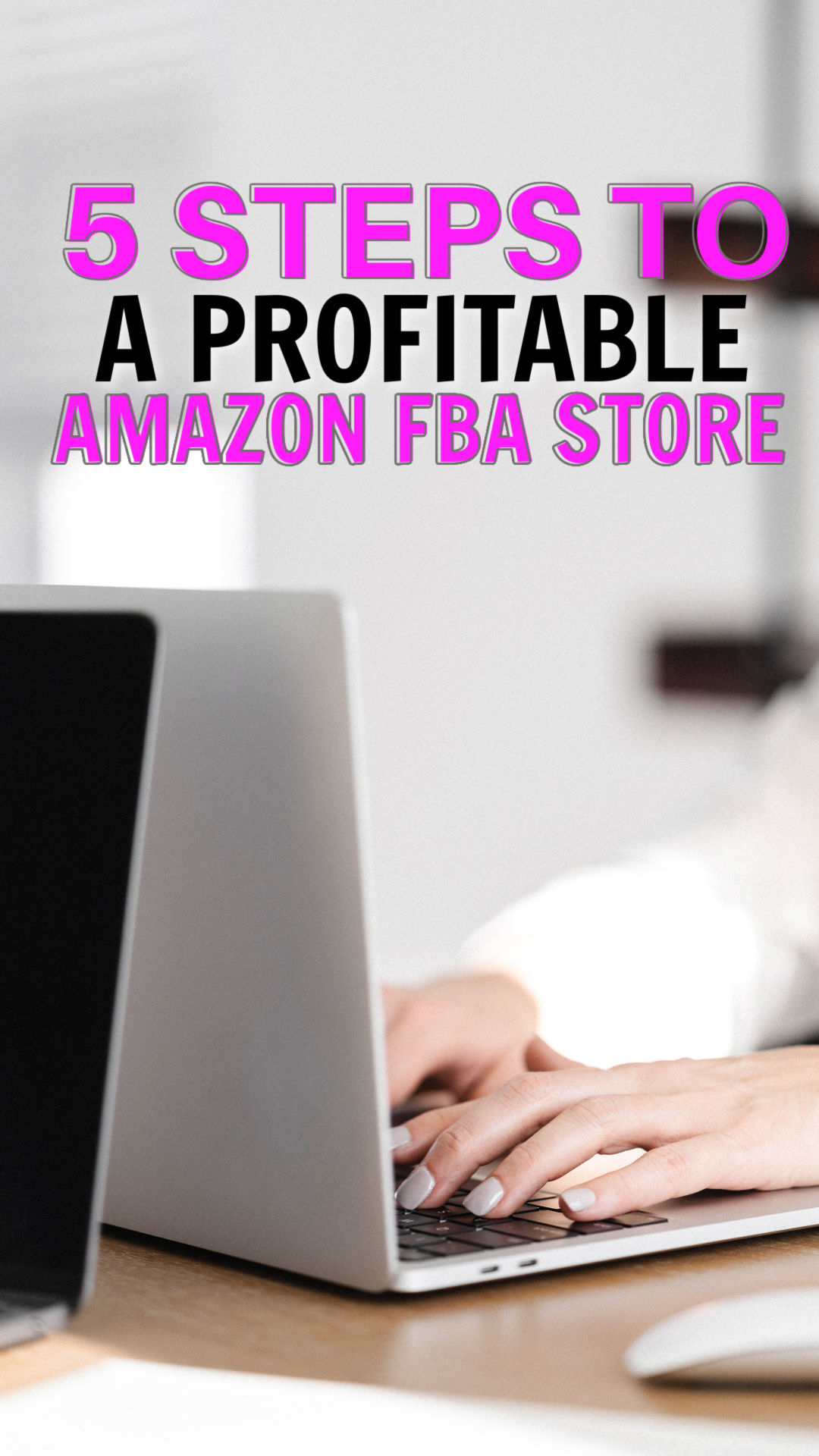
Starting an Amazon FBA store on a tight budget can be challenging, but it is possible with proper planning and budgeting.
Let’s take a look at the steps involved:
Step 1: Identify Your Start-Up Costs
Identifying your start-up costs is crucial, especially if you are operating on a limited budget.
You’ll have many costs to cover in the beginning and need to be able to cover them all in order to be successful.
Here are some common start-up costs new Amazon sellers need to consider:
Amazon seller account fees
You will need to pay a monthly subscription fee to sell on Amazon plus selling fees once your business starts making sales.
Currently, the Amazon FBA fees are $39.99 a month in the USA.
If you are just getting started, you can avoid the monthly fee as long as you sell less than 40 units a month.
In this case, you will be on the individual plan and pay $0.99 per unit sold in addition to the regular Amazon fees for selling.
Branding and packaging
Even though you are selling on Amazon, you will want to consider business cards and a logo in order to create a brand identity and packaging for your products.
You can save money by doing these yourself on a free platform like Canva or making them on a site like Vistaprint.
Shipping and Storage
The beauty of running an Amazon FBA business is that you don’t need to manage your shipping or storage.
Of course, you will need to factor in the cost of shipping your products to Amazon’s fulfillment centers so they are ready for your customers.
Once you have handled that, for a fee, Amazon will handle the rest.
The Amazon FBA fees are charged on a per-unit basis and include the following:
- Picking and packing your orders
- Shipping and handling
- Customer service
- Product returns.
Here is an idea of the current fulfilment fees:
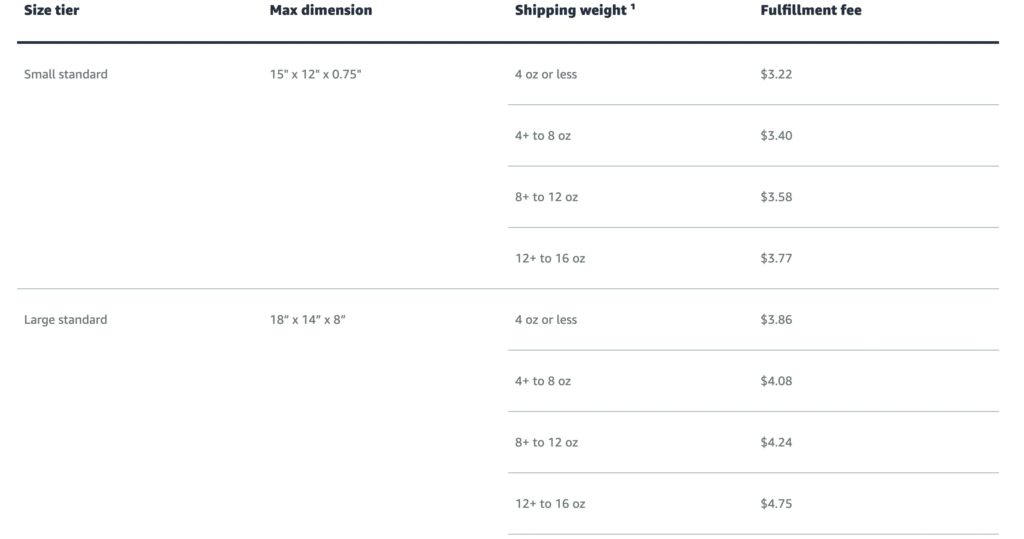
Step 2: Choosing The Right Products
Product research will help you find the most profitable items to list on your Amazon FBA store.
If you are on a shoestring budget, you need to make sure the products you choose are in huge demand.
If you have a product idea in mind, then that will make things easier but if not, there are a few ways to find the right product for you.
First, identify a niche or product category that interests you.
Look up different products on Amazon in that niche and see what sells.
Conduct market research to evaluate demand, competition, and profitability.
The best way to do this is to consult the Amazon best sellers rankings to see what the top-selling products are in each category.
Look for products with good sales potential, moderate competition, and room for differentiation.
Selling Private Label Products on Amazon
Selling private label products on Amazon FBA can be a lucrative business strategy.
Private label sellers find generic or existing products and brand them under their own unique labels.
It is a great way to get your first product up and running on Amazon quickly and for little money.
By leveraging Amazon FBA’s fulfillment services, you will be able to focus on product development, marketing, and customer service while Amazon handles the storage, packaging, and shipping logistics.
Selling Digital Downloads On Amazon
Bear in mind that you can sell physical products and digital downloads.
Obviously, digital downloads will save you money on the Amazon Fulfilment Center fees.
Whether it’s e-books via Amazon KDP music, software, courses, or artwork, Amazon allows sellers to offer a wide range of digital products to a massive customer base.
Remember, you can even self-publish using with Kindle Publishing from Amazon.
Next, you’ll want to decide whether to manufacture your own products, source them from wholesalers, or use a combination of both.
Step 3: Product Sourcing
This is probably the most important part of your Amazon business.
You need to find the best products at the best prices so that you can sell a lot and make a healthy profit.
Finding low-cost suppliers is essential to keeping your expenses low and maximizing your profits.
A good supplier relationship is the key to success and will make it much easier to scale your business as you grow.
Here are some tips for finding low-cost suppliers:
- Research suppliers on Alibaba: Alibaba is a popular platform for sourcing products from low-cost suppliers.
- Negotiate with suppliers: Don’t be afraid to negotiate with suppliers to get the best possible price.
- Consider dropshipping: Dropshipping can be a cost-effective way to sell products without having to purchase inventory upfront.
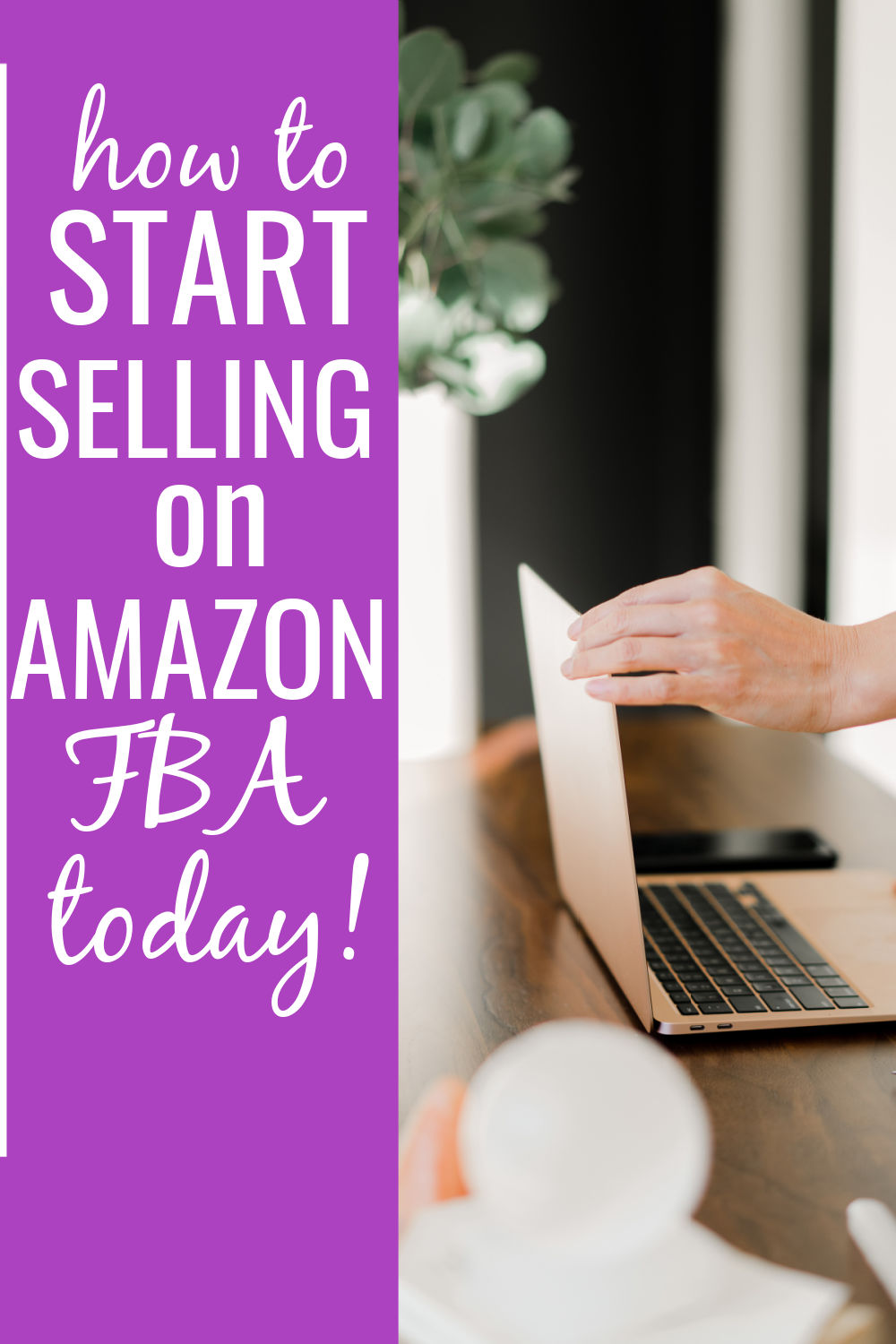
Step 4: Setting Up Your Amazon FBA Store
Starting an Amazon FBA store can be a great way to earn some extra income.
However, if you’re on a tight budget, it’s important to be strategic about how you set up your store. In this section, we’ll walk you through the process of setting up your Amazon FBA store on a budget.
Registering for an Amazon Seller Account
The first step in setting up your Amazon FBA store is to register for an Amazon seller account.
If you already have an Amazon account, you can use that to sign up as a seller.
If not, you’ll need to create a new account.
When you sign up as a seller, you’ll need to provide some basic information about yourself and your business.
You’ll also need to choose between an individual seller account or a professional seller account.
While the individual account is free, the professional plan costs $39.99 per month.
If you’re just starting out and don’t plan to sell more than 40 items per month, the individual account is probably the better choice.
Creating Your Product Listings
Once you’ve registered for your Amazon seller account, you can start creating your product listings.
When creating your product listings, be sure to use high-quality product images that showcase your items effectively.
You’ll also want to write clear, accurate, and persuasive product titles and descriptions that grab your potential client’s attention and get that sale.
Pricing Your Products
One of the most important factors in the success of your Amazon FBA store is pricing your products correctly.
While you want to make a profit, it’s important to be competitive with your pricing.
Sometimes people get stuck on setting the right pricing for their products but I use this simple approach:
- Be sure to take into account your costs, including the cost of the product, shipping, and Amazon’s fees.
- Take some time to research competitor prices and consider factors like product quality, features, and brand positioning.\
- Next, determine your desired profit margin and set your prices accordingly.
You can use Amazon’s fee calculator to help you determine the fees associated with selling your products.
Step 5: Marketing Your Amazon FBA Store
A good product will only get you so far.
You need to actually get the customers to buy your product too and in order to do that, you need to have a marketing strategy.
Marketing is essential to increase your visibility and drive sales.
Even if you’re starting an Amazon FBA store on a tight budget, money spent on marketing will help you in the long run.
Optimize Your Listings for Search
Using Search Engine Optimization is very important for your Amazon FBA store.
You want to optimize your listings with relevant keywords to improve visibility in Amazon’s search results.
This will help your products stand out and increase your chances of making a sale.
Here are some tips for doing this:
- Use relevant keywords in your product titles and descriptions. You can use keyword tool sites like Sale Samurai to help with this.
- Write compelling product descriptions that highlight the benefits of your products.
- Use high-quality images that showcase your products.
- Optimize your product listings for mobile devices.
Create a Social Media Presence
One of the most effective ways to market your Amazon FBA store is by creating a social media presence.
Social media platforms like Facebook, Instagram, and Twitter can help you reach a wider audience and build brand awareness.
Make sure to create pages on all these platforms and add links to your Amazon FBA storefront.
Create posts showcasing your new products and offer promotion codes
You can also run social media ads to target your ideal audience.
Make sure to interact with your followers and respond to their comments and messages promptly.
Use Amazon Market Tools
You can use Amazon’s advertising tools like Sponsored Products, Sponsored Brands, and Display Ads to increase visibility.
Amazon Pay-Per-Click (PPC) ads can have a powerful effect on your store’s visibility but they may not be a good option if you are on a tight budget.
With Amazon PPC, you can target specific keywords and products to reach your ideal audience.
The ads are displayed at the top and bottom of search results pages, increasing your visibility and driving traffic to your store.
To get started with Amazon PPC, set a budget and bid on keywords that are relevant to your products.
Make sure to optimize your product listings and use high-quality images to increase your click-through rate.
Building Your Email List
Email marketing is a cost-effective way to market your Amazon FBA store and build a loyal customer base.
This is something you can do to market your Amazon store at no cost using a free email provider.
To get started, create a lead magnet like a free e-book or discount code to incentivize visitors to sign up for your email list.
Once you have a list of subscribers, send them regular newsletters and promotional emails that showcase your products and offer exclusive discounts.
Make sure to personalize your emails and segment your list based on their interests and purchase history.
In conclusion, marketing your Amazon FBA store is essential to increase your visibility and drive sales.
By creating a social media presence, running Amazon PPC ads, and building your email list, you can effectively market your store on a tight budget.
Tips For Managing Your Amazon FBA Store
When you start an Amazon FBA store on a tight budget, it’s important to manage your store effectively to maximize your profits.
Handling Customer Service
As an Amazon FBA seller, you need to provide excellent customer service to maintain a good reputation and attract more customers. Here are some tips to help you handle customer service effectively:
- Respond to customer inquiries promptly and professionally.
- Resolve customer complaints quickly and satisfactorily.
- Use Amazon’s messaging system to communicate with customers.
- Offer refunds or replacements for defective or damaged products.
Managing Your Inventory
Managing your inventory is crucial to the success of your Amazon FBA store. You need to keep track of your inventory levels to avoid stockouts and overstocking. Here are some tips to help you manage your inventory effectively:
- Use Amazon’s inventory management tools to track your inventory levels.
- Set up alerts to notify you when your inventory levels are low.
- Use Amazon’s FBA storage fees calculator to estimate your storage fees.
- Optimize your inventory levels to reduce your storage fees.
Starting An Amazon FBA Store on a Tight Budget: Final Thoughts
If you want to start your own business with nothing more than a little money and an internet connection, Amazon FBA is a good idea.
By targeting the best-selling items and having a strong business plan, you can easily take the next step into your life as a small business owner in just a few steps.
Remember, building a profitable Amazon store takes time, effort, and continuous learning.
Stay updated with Amazon’s policies, adapt to market changes, and seek out additional resources like online courses, forums, and industry blogs to enhance your knowledge and skills.
Good luck with your journey as an Amazon FBA seller!
